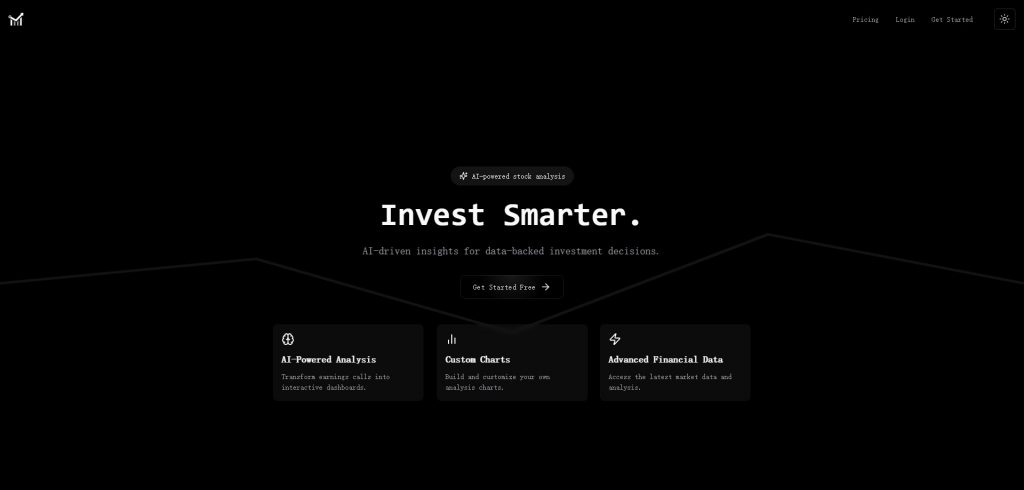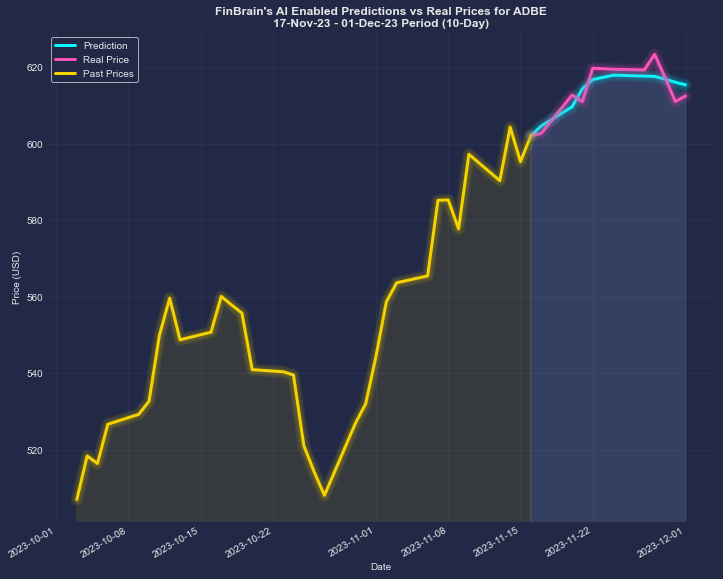20 Great Ideas For Choosing AI Stock Trading Sites
20 Great Ideas For Choosing AI Stock Trading Sites
Blog Article
Top 10 Tips For Evaluating Market Coverage By Ai Stock Predicting/Analyzing Trading Platforms
When looking at AI trading platforms that can predict or analyze the market, coverage of the stock is a key aspect to consider. It determines which assets and markets are available. Market coverage is essential as it lets you diversify your portfolio, learn about the world's markets, and adjust different trading strategies. These are the 10 best tips for evaluating the market coverage offered by these platforms.
1. Evaluate Supported Asset Classes
Stocks: Make sure that the platform includes stocks from all the major stock exchanges, which include NYSE, NASDAQ and LSE.
ETFs: Ensure that the ETF platform you are using offers an array of ETFs to provide diversified exposure across categories, themes, and regions.
Futures and options: Determine whether the platform is able to handle derivatives, such as futures, options and other instruments that leverage.
The commodities and forex. Determine whether the platform provides forex pairs as well as base and precious metals, energy-related products, and agricultural commodities.
Cryptocurrencies - Check to see whether your platform is compatible with major copyright like Bitcoin, Ethereum and altcoins.
2. Check Coverage Area
Global markets. Your platform should cover the major global market that includes North America Europe Asia-Pacific and emerging countries.
Regional focus: Check whether the platform is focusing on particular markets or regions which match your trading preferences.
Local exchanges. Make sure the platform supports exchanges regional or local to your area.
3. Compare Real-Time vs. Delayed Data
The availability of real-time data is crucial to speed up decision-making, particularly in active trading.
The data is delayed. Check if the delayed data is available for free or at a reduced cost, which may suffice for investors who are looking to invest long-term.
Latency of data. Check to see if your platform minimizes the amount of latency for real-time feeds.
4. Examine the historical availability of data
Depth and breadth of historical data: Make sure that the platform has extensive historical data (e.g. for at least 10 years) to permit backtesting.
Granularity: Determine whether the historical data contains the intraday granularity aswell as daily, weekly and monthly.
Corporate actions: Check whether the historical data is accounted for by dividends, stock splits and other corporate actions.
5. Find out the market's depths and place an order for books
To get a better price Make sure the platform has Level 2 data.
Spreads of bids: Make sure that the platform is displaying real-time bid spreads for accurate price.
Volume data: Verify if the platform includes detailed volume data for analyzing liquidity and market activity.
6. Review the your coverage of Indices and Sectors
Major indices: Check that the platform covers major indices (e.g., S&P 500, NASDAQ 100, FTSE 100) for benchmarking purposes and index-based strategies.
Data from specific sectors for specific analysis, determine if the platform has information for specific sectors (e.g. health care, technology, etc.).
Custom indexes. Verify that the platform allows you to create and monitoring custom indices based on your criteria.
7. Integrate Sentiment and News Data
News feeds : Make sure you use a platform that incorporates live news feeds, preferably from reputable media sources (e.g. Bloomberg and Reuters) for the most important market news events.
Sentiment Analysis: Verify if the platform offers sentiment analysis tools built on news, social media or other data sources.
Trades driven by events: Confirm the platform's support of event-driven trades (e.g. announcements on economic data or earnings announcements).
8. Check for Multimarket Trading Capabilities
Cross-market trading: Ensure the platform allows trading across multiple assets and markets from a single interface.
Conversion of currency: Make sure your platform supports multiple-currency trading and automatic currency conversion.
Time zone support: Check if the platform accommodates trading in different time zones that are used for trading on global markets.
9. Check the coverage of other data sources
Alternative data: See whether the platform is able to integrate other data sources (e.g. satellite imagery or internet traffic, credit card transactions) to gain unique insights.
ESG data. Verify whether the platform is stocked with environmental, socio-economic, and governance data for socially responsible investing.
Macroeconomics data: for a more basic analysis, ensure that the platform is stocked with macroeconomic indicators like GDP (gross domestic product) inflation rates, GDP and interest rates.
10. Review Market Feedback and User Reviews. Reputation
User feedback: Use reviews from users to assess the credibility of the platform as well as market coverage.
Check the reputation of the platform in terms of its coverage or awards for industry.
Case studies and testimonials They will showcase the platform's performance in specific markets or classes of assets.
Bonus Tips:
Trial time: You can use the demo, trial, or free trial to evaluate the market coverage and data quality.
API access: Determine if your platform's API is able to access market data programmatically in order to perform custom analyses.
Support for customers: Ensure that the platform is able to assist you with any market-related queries or issues with data.
These suggestions will allow you assess the market coverage provided by AI trading platforms which predict or analyze price movements of stocks. This way, you'll be able to select the platform that offers the information and markets you require to be successful in trading. A broad market coverage allows investors to diversify their portfolios, explore new possibilities, and adjust to the changing market conditions. Check out the top rated I was reading this for ai stocks to invest in for blog info including ai chart analysis, free ai tool for stock market india, free ai investing app, stock ai, ai for stock trading, stock analysis websites, stocks ai, ai for stock trading, investment ai, ai chart analysis and more.
Top 10 Ways To Evaluate The Scalability And Accuracy Of Stock Trading Platforms Based On Ai
To ensure that AI-driven stock trading and prediction platforms are scalable, they must be able to cope with the ever-growing volume of data and the increasing complexity in markets, in addition to user demands. Here are 10 top suggestions for evaluating the scalability.
1. Evaluate Data Handling Capacity
TIP: Ensure that the platform is able to process and analyze large datasets.
Why: Scalable systems must handle data volumes that are increasing without affecting performance.
2. Check out real-time processing capabilities
Tip: Check the capability of the platform to handle real-time information streams, including live stock prices, or breaking news stories.
The reason: Inconsistent trading decisions can lead to missed opportunities.
3. Check Cloud Infrastructure and Elasticity
Tips. Find out if the platform utilizes cloud-based infrastructure, such as AWS, Google Cloud and Azure that can scale resources on demand.
Why cloud platforms are so popular: They provide elasticity, allowing the system to expand or contract depending on the demand.
4. Algorithm Efficiency
Tips: Examine the computational efficacy and the accuracy of AI models for prediction.
Reason: Complex algorithms can be resource-intensive, therefore optimizing them is crucial for scalability.
5. Explore Parallel Processing and Distributed computing
Tip: Verify whether the platform is using frameworks for parallel processing or distributed computing frameworks.
What are they: These technologies facilitate quicker data processing and analytics across multiple nodes.
Review API Integration.
Test the platform’s ability to incorporate APIs from other sources.
What's the reason? Seamless integration with platforms makes sure it is able to adjust to new data sources or trading environment.
7. Analyze User Load Handling
Tip: Simulate large user traffic to test how the platform performs under stress.
Why: Performance of a platform that is scalable should not be affected by the growth in users.
8. Evaluate the model's retraining and adaptability
Tip: Check how frequently the AI model is retrained and with what efficiency.
The reason is that markets change and models need to be able to adapt rapidly to ensure the accuracy.
9. Verify that Fault-Tolerance and Redundancy are in place.
TIP: Make sure the platform is equipped with failover features, and also has redundancy in the event of software or hardware malfunctions.
The reason: Since downtime can be expensive when trading Fault tolerance is a must for scalability.
10. Monitor Cost Efficiency
Review the costs associated with your platform, including the cloud resources, storage and computation power.
What is the reason? Scalability shouldn't be at the expense of unsustainable costs. It is therefore important to find a balance between cost and performance.
Bonus Tip: Future-Proofing
Make sure the platform can adapt to changes in regulations and incorporates emerging technologies, like quantum computing, or even advanced NLP.
By focusing your attention on these elements and focusing on these factors, you can evaluate the scalability AI prediction as well as trading platforms. This guarantees that they are durable and effective, and well-equipped for future expansion. Take a look at the top get the facts on ai copyright trading bot for more info including trader ai intal, ai trading tools, ai copyright trading, ai trading app, ai bots for trading, ai investing tools, best stock analysis website, ai for investing, ai stock price prediction, ai stock prediction and more.